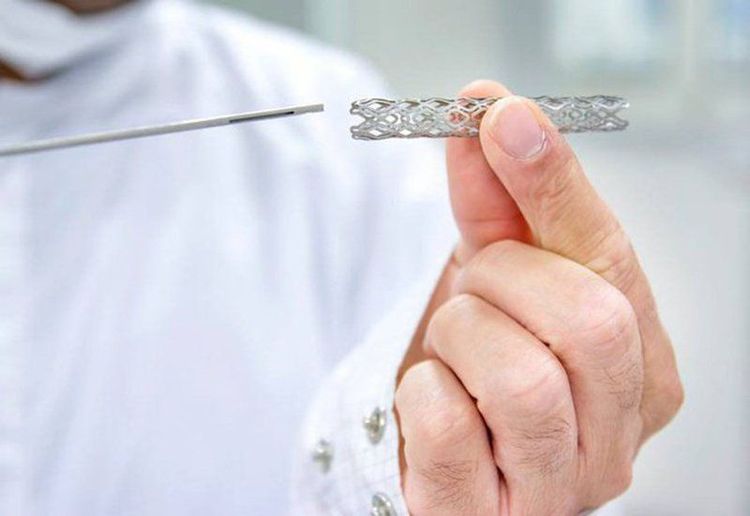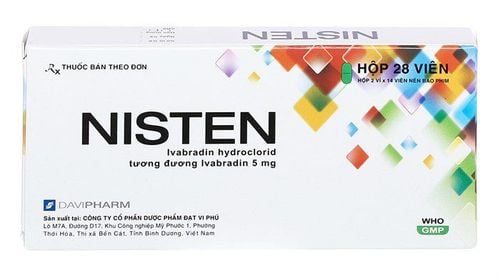This is an automatically translated article.
Coronary stenting is a procedure that has many benefits for patients' health such as reducing chest pain symptoms, reducing the risk of myocardial infarction. However, it also has many potential risks and undesirable risks.
1. State the risks and benefits of coronary stenting
1.1 Benefits of coronary stents Coronary stents are mesh tubes made of metal or polymeric materials (with or without drug coating) that are used to support the lumen of the artery. The advantage of coronary stents is that it helps to widen the narrowed and weakened arteries in the body.
Coronary stenting is a percutaneous coronary intervention technique, which helps to re-open the coronary artery by balloon angioplasty, leaving the stent fixed at the location of the blocked coronary artery. This technique helps to improve coronary circulation, stabilize atherosclerotic plaques, and at the same time relieve symptoms of angina caused by myocardial ischemia, thereby reducing the risk of myocardial infarction complications. At the same time, this is also a minimally invasive technique that helps patients recover quickly, shorten hospital stays, and improve mobility.
1.2 Risks of coronary stents Coronary stents help reduce symptoms caused by coronary artery disease, prevent myocardial infarction. There are a number of possible complications after coronary stenting:
Infection, pain or discomfort at the catheter insertion site; Reactions to anesthetics or contrast agents during coronary stenting. Occasionally, kidney failure, stroke may occur; When the catheter is inserted into the coronary artery, it can cause damage to the vessel wall, cause narrowing in another location or the risk of the stent not fully expanding, being displaced; There is a risk of coronary artery re-stenosis after intervention due to scar tissue, thrombosis developing in the stent lumen. The risk of thrombosis is often due to the patient's non-compliance with the indications for the use of anticoagulants; Bleeding caused by anticoagulants.

Người bệnh có thể gặp một số rủi ro và biến chứng sau đặt stent mạch vành
2. Indications for coronary stenting? How to limit the risks?
2.1. In what cases is a coronary stent placed? Angioplasty and stenting of the coronary arteries are indicated in the treatment of coronary artery disease, specifically in the following cases:
Stable angina unresponsive to optimal drug therapy Stable angina, but with myocardial ischemia (positive stress test or positive myocardial perfusion scintigraphy) and lesions in the coronary arteries that supply large areas of myocardium on noninvasive imaging. Unstable chest pain/acute myocardial infarction without ST elevation but high risk stratification. Acute myocardial infarction with ST elevation. Angina appeared after the patient performed coronary bypass surgery. After percutaneous coronary intervention, there were symptoms of restenosis in the stent. 2.2. How to limit the risks after coronary stenting To prolong the life of the stent, reduce the risk of unwanted complications, patients should follow the following measures:
Use medications as directed prescribed by the doctor, do not change or stop taking the medicine on your own; Periodic re-examination at 1 - 3 - 6 - 12 months after stent placement. At 12 months, it is necessary to have a follow-up examination, do a stress test so that the doctor can assess the perfusion ability of the heart muscle; Change in diet: Lose weight if you are overweight or obese; do not smoke, do not drink alcohol to avoid harm to the heart; control blood sugar if you have diabetes; reduce the amount of salt in the body; limit eating animal fat or fried foods; should eat more green vegetables, whole grains and fresh fruits; Maintain an appropriate amount of exercise: Patients should not drive long distances, do not have sex for 2 weeks after the procedure. At the same time, patients after coronary intervention should not perform vigorous physical activities, but should only practice gentle walking or yoga for 30-60 minutes/day; Keep your mind stable and avoid excessive stress; When there are symptoms of chest pain, excessive shortness of breath, the patient should stop exercising, rest and inform the doctor about the condition; When you need to use drugs that are not prescribed by your doctor, you should notify your doctor for specific advice. SEE ALSO: Attention to care and treatment after coronary stenting to avoid recurrence

Ưu điểm của stent mạch vành là đem lại nhiều lợi ích đối với sức khỏe người bệnh
3. Alternative treatment options in high-risk cases
In case of coronary re-stenosis after stenting, stent occlusion causing myocardial infarction or narrowing in the surrounding area or damage to other blood vessels will be performed arterial bypass procedure. owner . This procedure is performed when the coronary artery is blocked for a long time, narrowing in many places, or occurring where it is difficult to place a stent. Patients with 3-vessel coronary artery stenosis, especially those with diabetes, often need surgery. This is an open-heart surgery technique that helps to completely solve the narrowing of the coronary arteries.
When performing aortic bypass, the doctor uses a piece of the patient's artery, used as a graft to bypass the blocked coronary artery. The blood flow to the heart will move in a new way, solving myocardial ischemia, helping to restore the contractility of the heart. Patients can return to physical activity as before and the symptoms of coronary stenosis will disappear, improving the patient's quality of life.
However, the open-heart surgery technique also has many limitations. Specifically, the patient's health takes a long time to recover and endurance also decreases.
Coronary stenting is a technique that helps to increase blood flow to the heart, relieve angina and prevent myocardial infarction. However, there are certain risks associated with having a stent placed. Therefore, it is necessary to follow the instructions of the doctor to minimize the risk of unwanted complications.
Cardiovascular Center - Vinmec International General Hospital is effectively and safely applying coronary angiography, balloon angioplasty, angioplasty and coronary stenting. Accordingly, after coronary intervention, patients are also monitored, managed and given intensive advice on how to care, manage and maintain appropriate nutrition to recover quickly.
The entire procedure of examination and treatment, coronary intervention at Vinmec is performed by a team of qualified, experienced and well-trained medical doctors, so it brings good treatment results, limited Reduce the risk of restenosis after coronary intervention.
Please dial HOTLINE for more information or register for an appointment HERE. Download MyVinmec app to make appointments faster and to manage your bookings easily.













